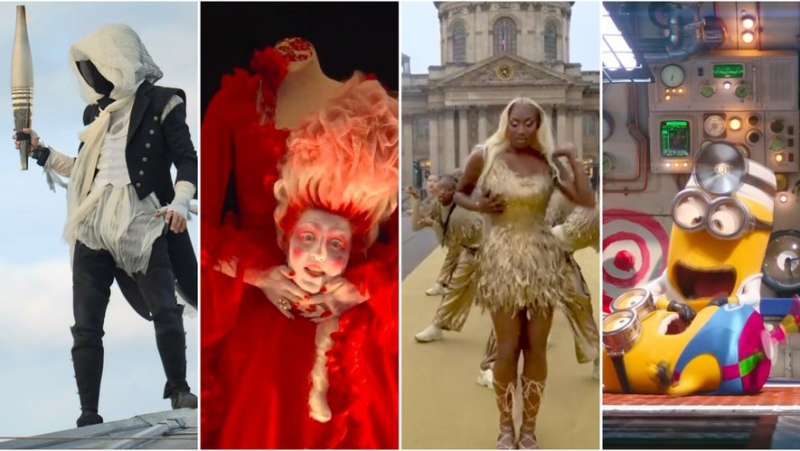Opening ceremony of the Paris 2024 Olympic Games: the Minions, Louis XIV, Aya Nakamura, portrait of a diverse France

Une cérémonie éclectique. – Capture d'écran
From Louis XIV to the Minions, from “Les Misérables” to “Lupin”: the opening ceremony of the Olympic Games, full of references, painted a picture of a France proud of its diversity and rich in its history.
Revolutionary France
The opening ceremony made numerous references to the French Revolution, starting with its title “Ca ira!”, a reference to the revolutionary song “Ah, ça ira, ça ira, ça ira!”.
But rearranged in a metal sauce by the group Gojira. The organizers say they were inspired by the ceremony of the Bicentenary of the French Revolution on July 14, 1989. It took place between the Arc de Triomphe, illuminated in pink, at the Place de la Concorde, two and a half kilometers further. African-American soprano Jessye Norman, draped in the blue-white-red flag, sang a martial Marseillaise at the foot of the obelisk.
Other periods of protesting Paris were also mentioned during the ceremony, including Delacroix's painting “Liberty Leading the People”, which had just been restored, and Victor Hugo's “Les Misérables”, his best-known work.
France in its diversity
The most popular French-speaking artist in the world, Aya Nakamura, 29, sang, accompanied by dancers… and the Republican Guard in a sequence paying tribute to crossbreeding and the mixing of genres. The Franco-Malian singer covered her two most famous songs "Pookie" then "Djadja" before performing "For me Formidable" by Charles Aznavour, one of the best-known French voices internationally. A performance praised by President Macron on . This sequence, however, irritated part of the French extreme right. Other symbols of a diverse France open to the world were in the spotlight, like the tirailleurs soldiers of the French colonial troops, who played a role considerable alongside the French army, particularly during the two world conflicts. They took part in the table dedicated to urban sports.
Feminist France
At the Pont Alexandre-III, a heartfelt tribute was paid to 10 great female figures in the history of France, starting with Olympe de Gouges, a politician known for having written the Declaration of the Rights of Women and the Female Citizen in 1791. A high-level athlete in the interwar period, Alice Milliat organized the first Women's World Games in 1922. Her commitment led to a greater presence of women at the Olympic Games. With Gisèle Halimi, a lawyer and politician, and Simone Veil, Minister of Health and concentration camp survivor, it was the fight for women's rights, particularly access to voluntary termination of pregnancy and the legalization of abortion, that was honored. The organizers' stated goal: for these statues to become a permanent fixture in the French landscape.
France exported
Among the biggest French hits of recent years, the series “Lupin” or the Minions were honored at the opening ceremony. The character of Arsène Lupin arrived in one of the first scenes of the evening, the “gentleman burglar” who has enjoyed international fame since the Netflix series starring Omar Sy. The yellow characters from the films “Despicable Me” (the fourth installment is currently in theaters in France) made a notable appearance. Fictional characters created by Pierre Coffin, a former student at the prestigious Gobelins school, they stole the Mona Lisa from a submarine, which ended up sinking, pierced by javelins. They represent the flagship of French animation. The adaptation of Victor Hugo's work “Les Misérables” into a musical comedy also had a prominent place. It was translated into 25 languages and exported around the world (38 countries), notably to Broadway, before being adapted for the cinema in 2012 with a Hollywood cast.
France and its great leading figures
With a touch of humor, it is urban disciplines and modern sports such as BMX, break-dancing or freestyle basketball that have highlighted the great leading figures of France throughout the centuries. “Sun King”, absolute monarch with the longest reign of a king of France (1643-1715), Louis XIV shared the stage on a BMX, with Napoleon I and General De Gaulle, emblematic figure of the French Resistance during the Second World War and then president from 1958 to 1969.




